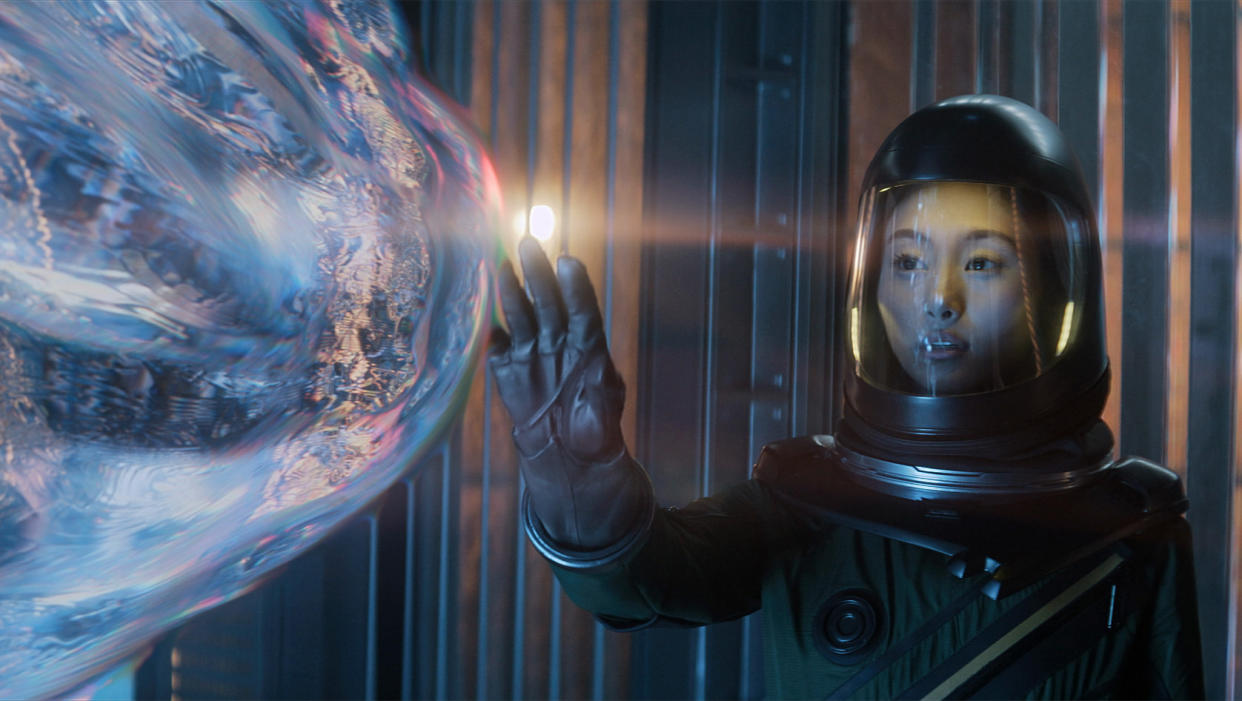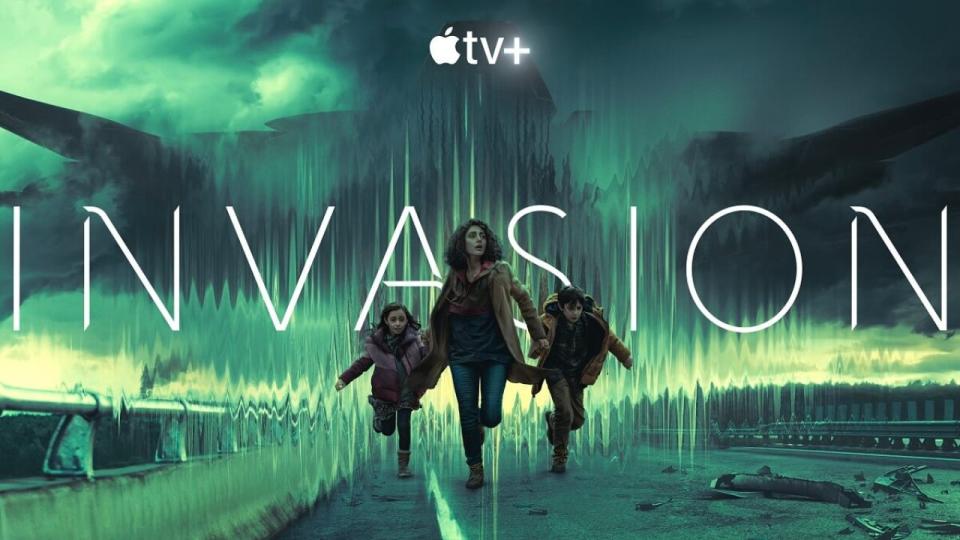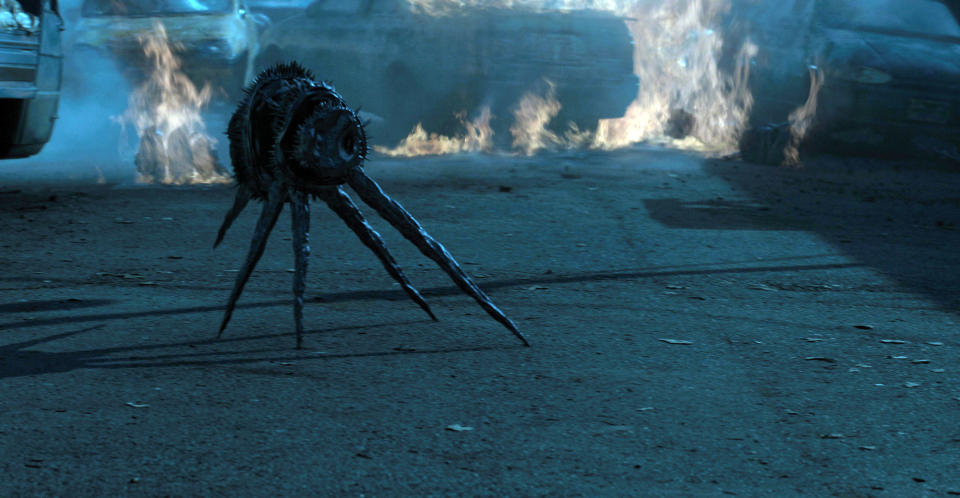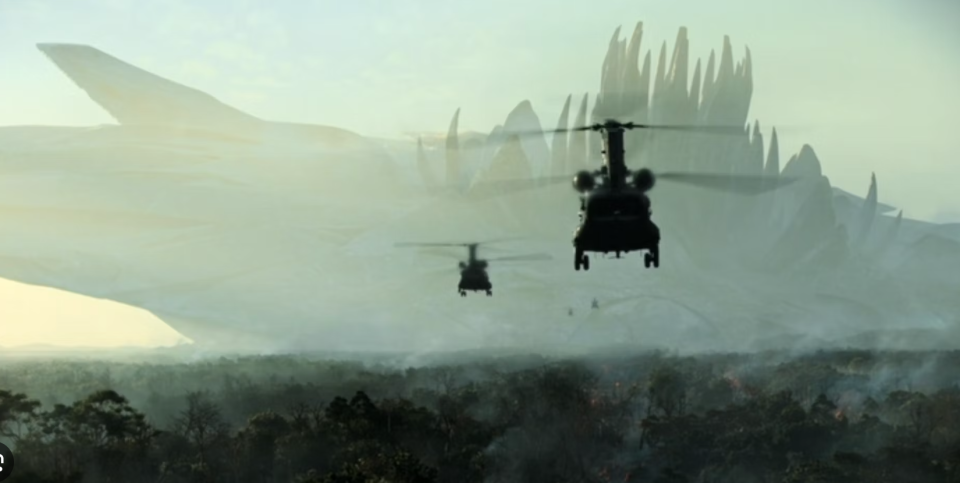'Invasion' Season 2 will feature alien hunter-killers and an homage to 'The Abyss' water tentacle (exclusive)

Apple TV+'s totally-engrossing sci-fi series "Invasion" just cracked open its second season on Aug. 23, 2023.
Forget all about the slower-paced exposition of 2021's first season as the alien threat has intensified exponentially while our international collection of brave survivors digs in to help eradicate this unpleasant infestation.
Created by Simon Kinberg ("Deadpool," "X-Men: Days of Future Past") and David Weil ("Citadel"), "Invasion" Season 2 picks up just months after the uninvited guests initially landed on Earth and follows a group of soldiers, parents, children and scientists embroiled in the global conflict.
The honor of bringing to life the unique alien species and their starships was bestowed upon Emmy Award-winning VFX artist Erik Henry, whose impressive work has been seen in notable TV series and feature films like "Black Sails," "Watchmen," "John Adams," "The Abyss," and "Alien: Resurrection."
Related: Aliens return to conquer Earth in 'Invasion' Season 2 on Apple TV+

Those black-spiked bioengineered marauders from "Invasion's" premiere season had an odd otherworldly appearance, something that's been advanced to even more terrifying dimensions this year as Henry elaborated on in a recent online chat that left us watching the skies for any sign of outer space usurpers!
Space.com: What was the concept for last season's pulsating insectoid drone creatures that ran amok and how have those lethal invaders evolved?
Erik Henry: Obviously you want to take it up a notch when you do a season two and build on what you created. In season one the aliens were called the workers, and they were there to terraform. Then Simon [Kinberg] wanted a 2.0 version and really wanted to say to the audience right from the get-go that we’re dropped into a war and things are evolving quickly and these worker aliens actually evolve into these larger, more weaponized drone aliens.
The idea was that just as life evolves on Earth, why wouldn't an advanced technology like these aliens adapt to the planet they're invading. They're like a pack of wolves and they have that sort of quadruped motion but then they also have these two extra limbs that can come out and slice and jam like a lance and are much more destructive at a human level. They don't eat or have a heartbeat and they don't have to have a mouth. But they do need the ability to kill easily and stalk and communicate as part of a hive mind. Hunter-killers come along a few episodes in.
Space.com: How does Max Richter's eerie score and the crew's exceptional sound effects and sonicscape sell the horror and suspense of this sci-fi series?
Henry: We do get an opportunity as the mixes are coming in. We're listening to that and seeing it. Surprisingly, it is something that as a visual effects artists you typically don’t get a chance to do. You're building and sending temp-comps out for the sound designers and the composers to look at and bring their art to it. This was an interesting collaboration right from season one, where we got a chance to lay the groundwork. We discussed how their technology works, how their tesseracting occurs and we spoke to the sound designers about how their ferro-fluid skin might sound and that really carries over into the new season.
Space.com: "Invasion's" visual effects have ramped up considerably since 2021's foundational episodes and their 1,400 special effects shots. How many more Season 2 effects shots were logged once production wrapped?
Henry: Well, I wouldn't say that it doubled, but it's close to that. I stay away from the numbers of it as I'm always more concerned with the quality.

Space.com: Besides these more formidable hunter-killer creatures, what other forms of this hostile species can fans look forward to as the season unfolds?
Henry: So we have the drone worker, then the hunter-killer, then as time goes on we'll see this sentient singular alien, this fluid being like blown glass that's still moving with beautiful colors. Emotions are difficult to come by when you have an amorphous shape. It's an entity that has quite intimate moments with one of the characters in the show, so it's a departure.
Certainly I told Simon Kinberg that since I worked on "The Abyss," this feels reminiscent. He said, 'Hey, if it is then people are saying that you've done a good job because you're taking it up a notch.' As in "The Abyss," it created a face of Mary Elizabeth [Mastrantonio] and it's communicating in a way. We take all of that away and you just have to believe there's a moment between them. As you watch the rest of the episodes you're going to see more of that and it evolves in a wonderful way.
Space.com: In the history of science fiction films, things can get silly with extraterrestrial creature design. How did you and your team find that balance between a functional alien that induces fear and something that might be perceived as funny and fall into parody?
Henry: I think it goes back to thinking intelligently and working through creating a universe of context. Why does the creature do that and how can it do this? Is conservation of mass being paid attention to and these laws that we think are universal here on Earth? I have the ships that are shown make sense from a standpoint of do they have the same material used in the drones, because that's super-special technology that they would use in other inanimate objects as well.
The walls have life in them in the same way that the workers and hunter-killers have. The fact that there are no rivets makes more sense. That to me is my driving force in coming up with all these ideas and how the teams should design these things and do the actual illustrations.

Space.com: What was your vision of the interior of the crashed spaceship and what cliches did you hope to avoid in its depiction?
Henry: The entity was the biggest challenge, with maybe the hunter-killer being a close second. But the thing I like the best, because I'm a science fiction kind of guy, is getting that right. There are a few shots where you enter into the large space of the fallen carrier ship that's in the Amazon. The success of those shots excite me the most because they're not in your face and it's not a show-off sort of moment.
Instead, it's more like a realization that this is what it should be like inside something as massive as that. And if you look carefully you get more stuff out of it. You see the small landing ships are populated throughout the interior. That slow reveal to me is what Raynault VFX in Montreal delivered on such a beautiful note there.
I've read the scripts for season three and once you finish season two and like where it's going, I think season three is even more epic.
"Invasion" Season 2 streams on Apple TV+ with new episodes each Wednesday.

